Español | Spanish
¡Saludos, Hive! Este post es el segundo en mi serie de reseñas/retro-reseñas de los títulos principales de la franquicia The Legend of Zelda, la vez pasada hablé del mítico A Link to the Past para la SNES (reseña que pueden leer haciendo click aquí) y esta vez es el turno de ni más ni menos que aquel considerado por muchos como el mejor videojuego creado jamás: The Legend of Zelda: Ocarina of Time, el videojuego que marcó para siempre a la industria y las vidas de muchas personas.
Así que sin más preámbulos, ¡Comencemos!
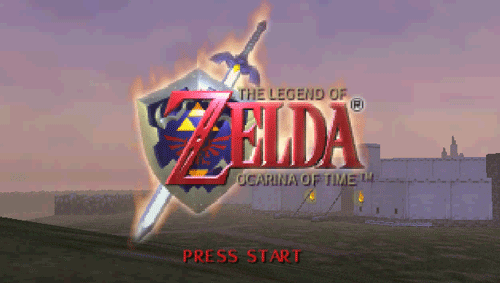

Ocarina of Time vio luz el 21 de noviembre de 1998 en Japón para la consola Nintendo 64. Para Norteamérica el juego fue lanzado dos días después, el 23 de noviembre de 1998, mientras que en Europa fue lanzado en 1999. Fue desarrollado por estudio filial llamado Nintendo EAD y publicado por Nintendo. Este juego ha tenido numerosas re-lanzamientos en posteriores consolas de Nintendo, como fue el caso de la edición Master Quest para el Nintendo GameCube, su inclusión en la consola virtual del Nintendo Wii, y un remake para la Nintendo 3DS llamado The Legend of Zelda: Ocarina of time 3D, que mejoró notablemente el apartado visual del juego.

Pero, ¿por qué este videojuego es considerado el mejor de la historia? Antes de Ocarina of Time tuvimos a Super Mario 64, quién fue el primer videojuego en dar el salto de las dos dimensiones a las tres dimensiones, esto gracias al poder de la nueva consola el Nintendo 64. Sin embargo, Super Mario 64 era un juego de plataformas, nuestro principal objetivo era superar los niveles sin mucho más que hacer aparte de eso. The Legend of Zelda es una franquicia de acción-aventura, y este género debía adaptarse al entorno en tres dimensiones, se debía no solo adaptar la jugabilidad si no la interacción con el mundo para que no se perdiese el sentido de la aventura, cosa que logró magistralmente. Ocarina of Time definió como funcionarían los juegos en 3D a partir de ese momento.
Ya las interacciones con los NPC (non playable character/personaje no jugable) no se limitaban a un dialogo o a una sola recompensa. Ahora cada NPC que nos encontrábamos tenía un rol en el vasto Hyrule que recorremos, y, aparte de esto, se conectaban con el mundo en sí mismo, con esto quiero decir que los NPC tenían interacciones entre ellos y no solo con Link, por ejemplo: conocías a alguien Villa Kakariko que tenía un problema, le ayudas a resolver su problema y se te recompensa con un objeto y ese objeto es algo que alguien en Bosque Kokiri necesita, y así sucesivamente. A esto le sumamos que gracias al poder del nuevo Nintendo 64 podías ver y escuchar las reacciones de los personajes ante las situaciones, incrementando aún más la inmersión. Quizás esto es algo que al día de hoy nos parezca lo más normal del mundo, pero en 1998 fue toda una revolución, demostrando que los videojuegos podían ofrecer muchísimo más que simplemente una distracción casual; podíamos aventurarnos en su mundo, explorarlo y sentirnos parte de él.
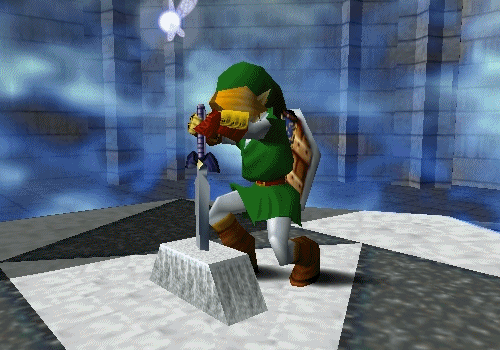

Una de las mejores acerca de esta entrega es que es dónde conocemos a las diversas razas que habitan Hyrule. Cada raza tiene su propia cultura, su propio folklore, su manera de expresarse, y por supuesto, sus propios problemas que nuestro protagonista silencioso deberá ayudar a resolver.
Tenemos a los Gorons, criaturas que habitan en la Montaña de la Muerte; fuertes, imponentes, extremadamente amigables y quizás no muy listos.
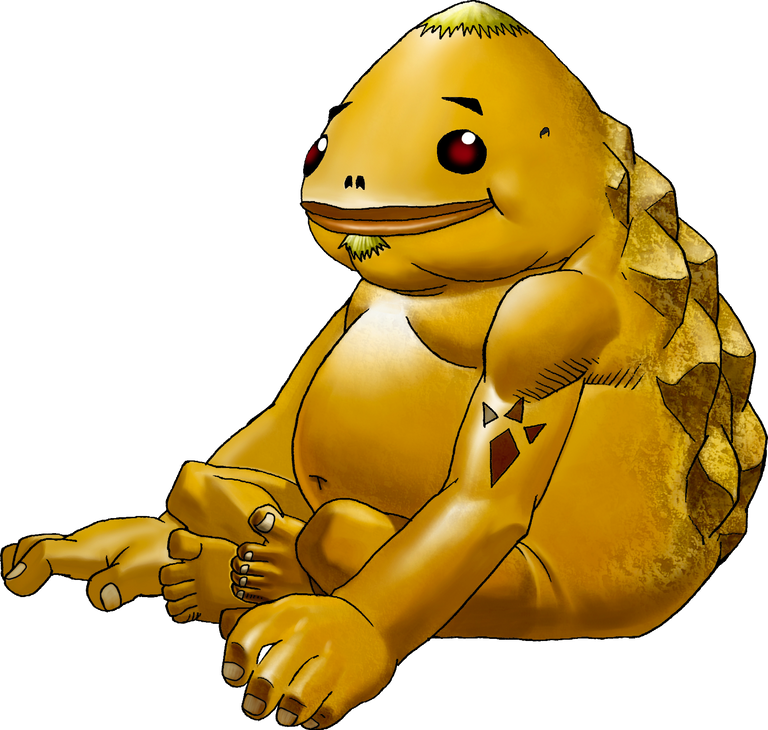
Goron. Fuente
Los Zora, la raza del agua, habitantes del Lago Hylia y los Dominios Zora, una raza grácil y elegante.

Zora. Fuente
Los Kokiri, los niños del bosque. Los Hylians (que vendrían siendo los humanos en este universo)

Los Kokiri. Fuente
Y finalmente las Gerudo, un orgulloso pueblo del desierto en el que todas sus habitantes son mujeres y las mejores guerreras de todo Hyrule.

Gerudo. Fuente

¿Por qué “Ocarina of Time”? El tiempo juega un rol fundamental en esta entrega, y es que todas las cosas mencionadas con anterioridad se ven directamente afectadas cuándo viajamos en el tiempo. Si, viajar en el tiempo.
Durante la primera sección del juego (que funciona básicamente como un macro-tutorial) controlamos a un Link niño, con el conocemos al mundo y nos familiarizamos con él, cuándo esta sección termina, viajamos 7 años al futuro, aquí Link ya es un adulto, pero no sólo él ha crecido y cambiado: El tiempo ha pasado para todo el mundo, y podemos ver este impacto tanto geográficamente como también en los personajes en sí mismos.

Jugabilidad
Con una nueva manera de ver el mundo venía también una nueva manera de recorrerlo. Ya el movimiento de Link no era solamente hacía arriba, abajo, izquierda o derecha, si no que a través del joystick del mando del Nintendo 64 podemos movernos naturalmente hacía la dirección que nos plazca. Los objetos siguen estando presentes y por supuesto adaptados al nuevo entorno, ahora las bombas también pueden ser arrojadas (y no solo colocadas como era anteriormente), el arco y flecha, la resortera, el boomerang y el gancho funcionan a través de una vista en primera persona que nos permite apuntar con precisión. Todo se siente posible, el arsenal de objetos es muy variado (el cuál cambia con respecto a Link niño y Link adulto. En general, Link adulto puede usar muchos más objetos) y está perfectamente integrado al mundo, nada parece forzado y todos los objetos que vamos consiguiendo a lo largo de nuestra aventura tendrán un papel importante en ella. Ahora podemos tener hasta tres objetos equipados al mismo tiempo cosa que aumenta el dinamismo del juego. Se añadió un botón dedicado exclusivamente al uso del escudo (antes el escudo se usaba de manera “automática”) y gracias a esto podemos defendernos de muchas más cosas que en entregas anteriores.
Algo que fue implementado por primera vez en esta entrega y que revolucionó a la industria fue el manejo de su cámara y la introducción de una mecánica que sería conocida como “Z-Targeting”. Para ese entonces controlar la cámara no era sencillo, así que Nintendo optó por ubicar la cámara en una vista fija en tercera persona para que el jugador siempre tuviera la vista centrada en lo que está adelante. El Z-Targeting se implementó para el combate, esto hacía que Link cambiara su posición natural a una estancia de combate, esto le permitía moverse alrededor del enemigo enfocado sin perderlo de vista, así como también atacar con mayor facilidad. Posteriormente este sistema fue aplicado a prácticamente el resto de juegos de la franquicia y otros tantos juegos.
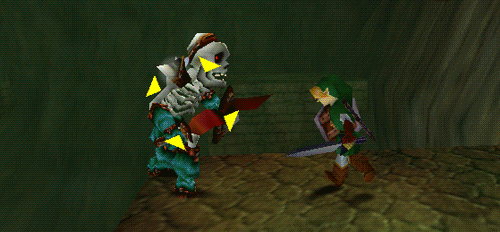
Z-Targeting. Fuente
Como ya es tradición en la franquicia, para avanzar en la trama de nuestra aventura tenemos que completar una serie de calabozos. Cada calabozo cuenta con una temática completamente distinta; el templo del bosque es muy distinto visual y jugablemente al templo del agua, por ejemplo. Cada calabozo tiene una mecánica distinta así como la resolución de sus acertijos, aunque hay elementos en común que se aplican para todos ellos. Los calabozos son de los mejores en la franquicia, cada uno con su propio tema y jefes finales, proponiendo un desafío lo suficientemente justo para no caer en el punto de la frustración. Con respecto al infame templo del agua, lo que hace que se sienta tan tedioso es que en la versión original del juego, para equipar las botas de hierro se tenían que entrar al menú de pausa, esto hacía que el proceso fuese lento y al tener que ser necesario tantas veces durante el templo hacía que se sintiera frustrante. Esto fue mejorado en la versión de 3DS añadiendo las botas de hierro a los objetos equipables.
El objeto más importante en nuestra aventura, a parte de la legendaria espada destructora del mal; la Espada Maestra, es la Ocarina del Tiempo. Con la Ocarina aprenderemos diversas canciones que nos servirán bien sea para solucionar acertijos, llamar a Epona, teletransportarnos, interactuar con los NPC, o bien simplemente permitir el desarrollo de la trama.
También se añadió un elemento muy importante que fue el montar a caballo, Epona se volvió una parte fundamental de la aventura y nuestro vehículo para explorar Hyrule.
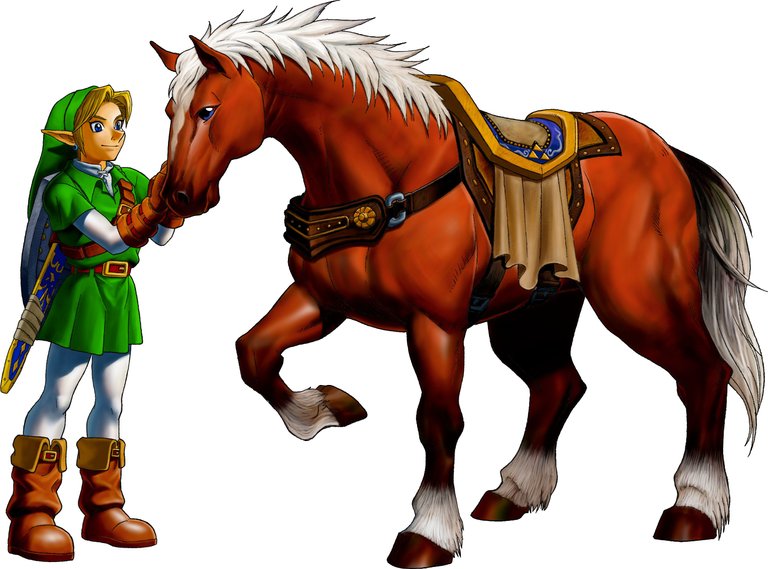

Sonido
El sonido en este juego es otro de sus apartados fuertes. Cada efecto de sonido está muy bien logrado y acompañan de forma excelente la ambientación; el sonido de los pasos siempre cambia dependiendo de la superficie en cuestión que estemos pisando, los sonidos de los golpes son satisfactorios, cada enemigo tiene su propio sonido o voz, podemos escuchar desde el cacareo de una gallina hasta el rugido de un feroz dragón. Este fue el primer Zelda en incluir voces, tenemos voces masculinas y femeninas bastante sencillas de diferenciar y muy bien logradas para la época.
Con respecto a su banda sonora… ¿Qué puedo decir que no se haya dicho ya? La banda sonora es una maravilla y un deleite escuchar desde el momento en el que encendemos la consola. Dejaré que hable por si sola en el siguiente video.

Historia
Como siempre, la historia en los juegos de Zelda no es una trama complejísima de entender o llena de pretensión, la historia de esta saga es una historia de la eterna pelea del bien contra el mal y esta entrega no es la excepción.
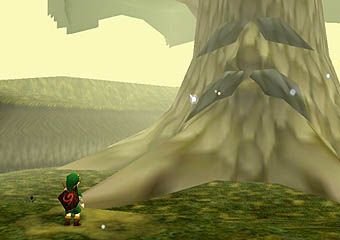
El gran arbol Dekú. Fuente
El relato comienza con el Gran Árbol Deku decide darle un hada acompañante a Link, nuestro protagonista. Link vive en el bosque Kokiri, habitado por los Kokiri, que son como unos duendecitos que se quedan como unos niños por siempre. Todos los Kokiri tienen un hada acompañante, pero por alguna razón, Link no la tiene. Cuándo Navi (el hada que nos da el Gran Árbol Deku) llega a nosotros, esta nos dice que tenemos que acudir cuánto antes a la presencia del gran árbol, este le explica a Link que dentro de el hay criaturas malignas qué deberá destruir.
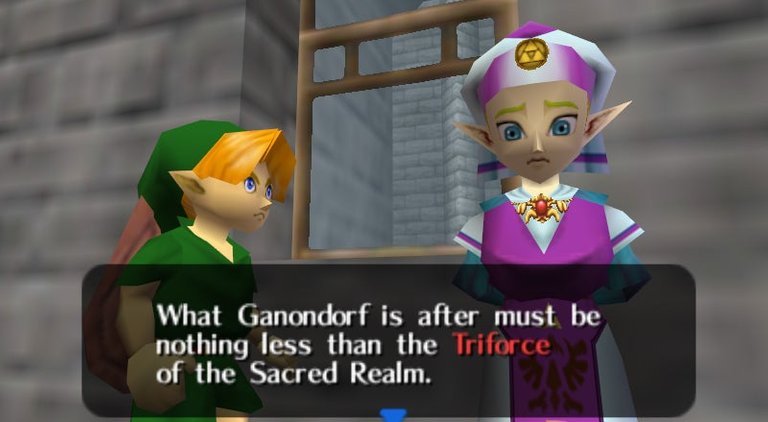
Primer encuentro de Link y Zelda. Fuente
Hecho esto, Link deja el bosque para encontrarse con la princesa Zelda, quien le explica que el malvado hechicero Ganondorf tiene planeado apoderarse del mundo, y, para detenerlo, Link deberá ser capaz de abrir las puertas del Templo del Tiempo, lugar donde descansa la Espada Maestra.
Como dato curioso es este juego el que divide en tres la línea temporal de la saga completa.

Conclusiones
No es nada exagerado cuándo se dice que The Legend of Zelda: Ocarina of Time es el mejor juego de la historia, su impacto en el medio dejó un antes y un después, marcó las pautas para todos los juegos posteriores a él y ha sido un referente a la hora de hablar y hacer videojuegos. Este fue el juego que convirtió a Zelda en una leyenda y lo consagró como una de las franquicias más queridas en los videojuegos. Creo que es la séptima u octava vez que termino este juego y simplemente no envejece. Marcó a toda una generación (o a varias) y fue mi inspiración para decidir ser músico. Ocarina of Time es LA leyenda de Zelda y si no lo has jugado por favor, anda a hacerte ese favor, después me agradeces.


English | Inglés
Greetings, Hive! This post is the second one in my series of reviews/retro-reviews about the main titles of The Legend of Zelda franchise, last time I talked about the mythical A Link to the Past for the SNES (review you can by clicking here) and this time it's turn to none other than the one considered by many as the best videogame ever created: The Legend of Zelda: Ocarina of Time, the videogame that marked forever the industry and many people’s life.
So without any further ado, let's start!


Ocarina of Time was released on November 21, 1998 in Japan for the Nintendo 64 console. For North America the game was released two days later, on November 23, 1998, while in Europe it was released in 1999. It was developed by a subsidiary studio called Nintendo EAD and published by Nintendo. This game has had numerous re-releases in later Nintendo consoles, as was the case of the Master Quest edition for the Nintendo Game Cube, Nintendo Wii’s virtual console inclusion, and a remake for the Nintendo 3DS called The Legend of Zelda: Ocarina of time 3D, which significantly improved the game’s visuals.

But, why is this videogame considered the best one in gaming history? Prior to Ocarina of Time, we had Super Mario 64, who was the first video game to make the leap from two dimensions to three dimensions, thanks to the power of the new Nintendo 64 console. However, Super Mario 64 was a platform game; our main goal was to complete the levels without much else to do apart from that. The Legend of Zelda is an action-adventure franchise, and this genre had to adapt to the three-dimensional environment, it had to adapt not only the gameplay but also the interaction with the world so that the sense of adventure wasn’t lost, something that was masterfully achieved. Ocarina of Time defined how 3D games would work from that moment on.
The interactions with the NPCs (non-playable characters) were no longer limited to a dialogue or a single reward. Now, every NPC we encounter has a role in the vast Hyrule, and, apart from this, they are connected to the world itself, by this I mean that the NPCs had interactions with each other and not only with Link, for example: you met someone Villa Kakariko who had a problem, you help him solve his problem and you are rewarded with an item, and that item is something that someone in Kokiri Forest needs, and so on. Add to this the fact that thanks to the power of the new Nintendo 64 you could see and hear the characters' reactions to situations, further increasing the immersion. Perhaps this is something that today seems the most normal thing in the world, but in 1998 it was a revolution, demonstrating that video games could offer much more than just a casual distraction; we could venture into their world, explore it and feel part of it.


One of the best things about this game is that it's here where we get to know the diverse races that inhabit Hyrule. Each race has its own culture, its own folklore, its own way of expressing itself, and of course, its own problems that our silent protagonist will have help them to solve
We have the Gorons, creatures that inhabit the Mountain of Death; strong, imposing, extremely friendly and perhaps not very smart.

Goron. Source
The Zora, the water race, inhabitant of Lake Hylia and the Zora's Domain, a graceful and elegant race.

Zora. Source
The Kokiri, the children of the forest. The Hylians (which would be the humans in this universe)

The Kokiri. Source
And finally the Gerudo, proud people from a desert village in which all its inhabitants are women, and also the best warriors of all Hyrule.

Gerudo. Source

Why "Ocarina of Time"? Time plays a fundamental role in this game, and all the things mentioned above are directly affected when we travel in time. Yes, time travel.
During the first section of the game (which basically works as a macro-tutorial) we control a child Link, with whom we get to know the world and become familiar to it, when this section ends, we travel 7 years into the future; here Link is an adult, but not only he has grown and changed: Time has passed for the whole world, and we can see this impact both geographically and also on the characters themselves.

Gameplay
With a new way of seeing the world also came a new way of traversing it. Link's movement was no longer only up, down, left or right, but through the joystick of the Nintendo 64 controller we can move naturally in the direction we want. The items are still present and of course adapted to the new environment, now the bombs can also be thrown (and not just placed as it was previously), the bow and arrow, the slingshot, the boomerang and the hookshot work through a first-person view that allows us to aim accurately. Everything feels possible; the arsenal of objects is very varied (which changes whether you’re child Link or adult Link. In general, adult Link can use many more objects) and is perfectly integrated into the world, nothing seems forced and all the objects that we gather throughout our adventure will have an important role in it. Now we can have up to three items equipped at the same time which increases the dynamism of the game. A button dedicated exclusively to the use of the shield was added (before the shield was used "automatically") and thanks to this we can defend ourselves from many more things than in previous installments.
Something that was implemented for the first time in this game and that revolutionized the industry as whole was the handling of its camera and the introduction of a mechanic that would be known as "Z-Targeting". At the time, controlling the camera was not easy, so Nintendo opted to place the camera in a fixed third-person view so that the player would always have the view focused on what was ahead. Z-Targeting was implemented for combat, this made Link change his natural position to a combat stance, and this allowed him to move around the focused enemy without losing sight of him, as well as attack more easily. Later this system was applied to practically the rest of the games of the franchise and many other games.

Z-Targeting. Source
As is tradition in the franchise, to advance our adventure's plot we have to complete a series of dungeons. Each dungeon has a completely different theme; the forest temple is very different visually and playable from the water temple, for example. Each dungeon has different mechanics and puzzle solving, although there are common elements that apply to all of them. The dungeons are among the best in the franchise, each with its own theme and final bosses, proposing a challenge just enough to not fall to the point of frustration. With regards to the infamous water temple, what makes it feel so tedious is that in the original version of the game, to equip the iron boots you had to enter the pause menu, this made the process slow and having to be needed so many times during the temple made it feel frustrating. This was improved in the 3DS version by adding the iron boots to the equippable items.
The most important object in our adventure, apart from the legendary sword destroyer of evil; the Master Sword, is the Ocarina of Time. With the Ocarina we will learn various songs that will serve us to solve puzzles, call Epona, teleport, interact with NPCs, or simply allow the plot’s development.
A very important element was also added, which was horse riding; Epona became a fundamental part of the adventure and our vehicle to explore Hyrule.


Sound
The sound in this game is another of its strengths. Each sound effect is very well achieved and excellently accompany the atmosphere; the sound of the steps always changes depending on the surface in question that we are stepping on, the sounds of the blows are satisfactory, each enemy has its own sound or voice, we can hear from the clucking of a chicken to the roar of a fierce dragon. This was the first Zelda to include voices, we have male and female voices quite simple to differentiate and very well achieved for the time.
Talking about the soundtrack... What can I say that hasn't already been said? The soundtrack is a marvel and a delight to listen to from the moment we turn on the console. I'll let it speak for itself in the following video.

Story
As always, the story in Zelda games is not a complex plot to understand or full of pretension, the story of this saga is a story of the eternal fight of good against evil and this installment is no exception.

Great Deku Tree. Fuente
The story begins with the Great Deku Tree deciding to give a fairy companion to Link, our protagonist. Link lives in the Kokiri forest, inhabited by the Kokiri, who are like little goblins that stay as children forever. All of the Kokiri have a fairy companion, but for some reason, Link doesn’t. When Navi (the fairy that the Great Deku Tree gives us) comes to us, she tells us that we have to go as soon as possible to the presence of the great tree; the tree explains to Link that inside him there are evil creatures that he must destroy.

Link and Zelda's first meeting. Fuente
Done this, Link leaves the forest to meet with Princess Zelda in Hyrule's Castle, who explains him that the evil sorcerer known as Ganondorf plans to take over the world, and in order to stop him, Link must be able to open the doors of the Temple of Time, where the Master Sword rests.
As a curious fact, it’s this game the one that splits into three the temporal line of the complete saga.

Final Thoughts
It is not far from reality to say that The Legend of Zelda: Ocarina of Time is the best game in history, its impact on the medium left a before and after, set the standard for all games after it and has been a benchmark when talking about and making video games. This was the game that turned Zelda into a legend and consecrated it as one of the most beloved franchises in video games. I think this is the seventh or eighth time I've finished this game and it just doesn't get old. It marked an entire generation (or several) and was my inspiration for deciding to become a musician. Ocarina of Time is THE legend of Zelda, and if you still haven't played it, please go do yourself that favor, thank me later.


Hasta aquí esta pequeña reseña de The Legend of Zelda: Ocarina of Time, sin lugar a dudas una obra maestra en el mundo de los videojuegos. ¿Y tú? ¿Ocarina of Time es tu Zelda favorito? ¿Odias el templo del agua?
We’re done with this little review of The Legend of Zelda: Ocarina of Time, undoubtedly a masterpiece in the world of video games. What about you? Is Ocarina of Time your favorite Zelda? Do you hate the water temple?

¡Muchas gracias por leerme, nos vemos en el siguiente post! | Thanks for reading! See ya next post!
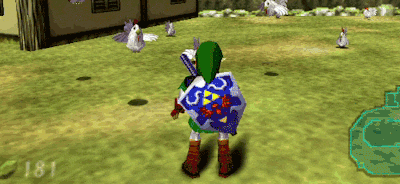
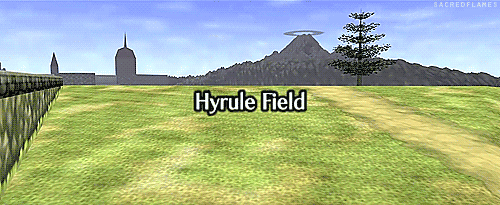
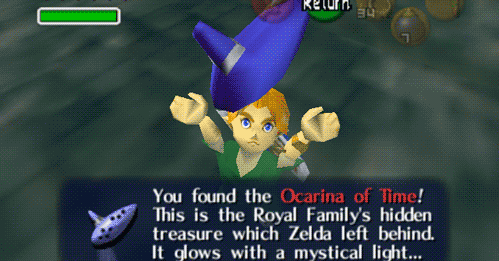
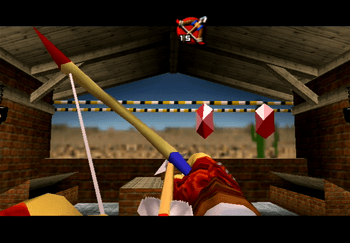
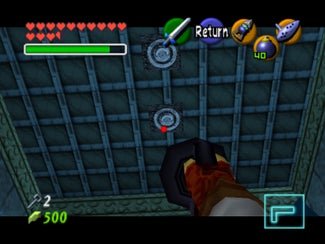

Congratulations @alejandroaldana! You have completed the following achievement on the Hive blockchain and have been rewarded with new badge(s) :
Your next target is to reach 1000 upvotes.
You can view your badges on your board and compare yourself to others in the Ranking
If you no longer want to receive notifications, reply to this comment with the word
STOPSupport the HiveBuzz project. Vote for our proposal!
confirmo: el mejor juego de la historia!! :) <3
El juego que lo cambió todo! Una obra de arte!
¡Felicidades! Esta publicación obtuvo upvote y fue compartido por @la-colmena, un proyecto de Curación Manual para la comunidad hispana de Hive que cuenta con el respaldo de @curie.
Si te gusta el trabajo que hacemos, te invitamos a darle tu voto a este comentario y a votar como testigo por Curie.
Si quieres saber más sobre nuestro proyecto, acompáñanos en Discord: La Colmena.
Your post has been voted as a part of Encouragement program. Keep up the good work!
Use Ecency daily to boost your growth on platform!
Support Ecency
Vote for Proposal
Delegate HP and earn more
⏫⏫ FAN BOY POST ALERT!! ⏫⏫
Jajajaja
Aldana mis respetos por este post muy compelto, fascinante y te atrapa hasta el final. Bravo por pos separadores 👏 lo lograste!
Tomando en cuenta todo lo que dijiste veo que Ocarina of Time marcó un antes y un después en los juegos de rol y aventura. Además de que es indiscutible que es un juego que es increíble de ver y escuchar para todo público. Todo desde mi punto de vista porque nunca los he jugado solo veo los gameplay.
Exitos y saludos!!
Jajajajajajaja juro que traté de ser lo menos fanboy posible :(.
Muchas gracias Jesy, por tomarte el tiempo de leerlo y por tu apreciado feedback, de verdad de verdad lo apreció muchísimo y leer tus comentarios y los de todas las personas que les gustan mis reviews me llena el corazoncito :'( jajajaja
Que increible post amigo, sumamente completo e interesante.
Ocarina Of Time siempre ha sido mi juego favorito de la franquicia y lo considero como uno de los mejores juegos de todos, no se cuantas veces he jugado a este titulo y simplemente me fascinaba todo en el, la banda sonora es una de las mejores para mi gusto. saludos
OoT no es mi favorito de la franquicia, sin embargo, este juego es magia pura y hay algo en el que hace que cada vez que lo juegues de nuevo sea tan especial como la primera vez. Es un juego con mucho significado para mi
Gracias muchisimas gracias, estaré haciendo mas reseñas de Zelda y por supuesto mejorando la calidad de los posts! Saludos
recuerdo la emoción que tenia cuando era un niño y conocí Ocarina Of Time ver a link siendo solo un niño y ver la reacciones que tenia al encontrarse un boss el miedo que debía sentir en ese momento pero aun así tener el coraje para superar esas adversidades dejo marcado mi infancia y ver su completo desarrollo en Majora's Mask.
Link como el portador de la trifuerza del coraje, a pesar de tener miedo no se deja dominar por el y enfrenta lo que sea.
Hay una reacción en particular que me encanta, que es en la boss fight de Kotake y Koume, cuándo se fusionan en Twinrova, Link tiene una reacción genial a esto!
OK este es un juegazo!!!, justo en mi infancia ahhh lo quiero mucho jajaja podía pasar todas las horas jugándolo de verdad acabas de desbloquear un momento feliz de mi niñez compartiendo con mi hermano mayor gracias por eso.
Thank you so much for your kind words and I'm really glad that you liked this review! Next ones will be a lot better.
If you have a chance, you can play Oot via emulator, nowadays even a toaster can run it xD you won't be dissapointed!
Thanks a lot!